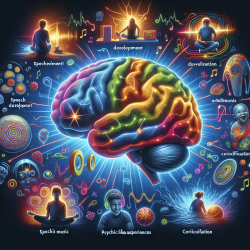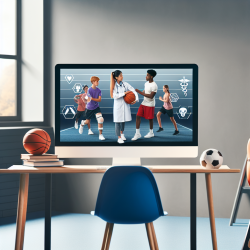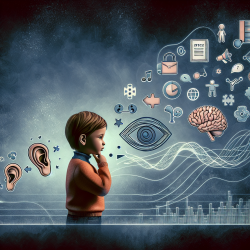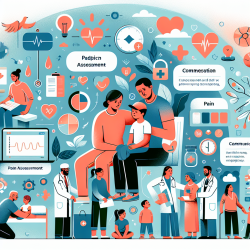Introduction
In the ever-evolving field of speech-language pathology, understanding the neurological underpinnings of adolescent development is crucial for optimizing therapeutic outcomes. Recent research by the IMAGEN Consortium sheds light on the relationship between psychotic-like experiences (PLEs) in adolescents and cortical gyrification, a marker of brain development. This study provides valuable insights that can be leveraged to enhance therapeutic strategies for children and adolescents.
The Study at a Glance
The research titled Psychotic Like Experiences in Healthy Adolescents are Underpinned by Lower Fronto-Temporal Cortical Gyrification explores the structural brain changes associated with PLEs. Conducted with 1252 adolescents, the study used MRI scans to measure cortical gyrification at ages 14 and 19, with follow-up assessments at age 23. The findings reveal that adolescents with elevated PLEs exhibit lower cortical gyrification in the fronto-temporal regions, a potential biomarker for vulnerability to psychosis.
Implications for Practitioners
For practitioners working with children, these findings underscore the importance of early identification and intervention. Here are some practical steps to consider:
- Early Screening: Incorporate assessments for PLEs in routine evaluations, particularly for adolescents showing signs of perceptual disturbances or unusual experiences.
- Collaborative Approach: Work closely with neurologists and psychologists to develop comprehensive intervention plans that address both cognitive and neurological aspects.
- Continuous Monitoring: Regular follow-ups and monitoring of cortical development can help in adapting therapeutic strategies to the evolving needs of the child.
Encouraging Further Research
While this study provides a foundational understanding, there is a need for further research to explore the dynamic changes in cortical gyrification and their impact on cognitive and speech development. Practitioners are encouraged to participate in or initiate research projects that delve deeper into these neurological markers.
Conclusion
Understanding the neurodevelopmental changes in adolescents is key to creating effective therapeutic interventions. By integrating the findings from the IMAGEN Consortium study, practitioners can enhance their approach to supporting children with PLEs, ultimately leading to better outcomes.
To read the original research paper, please follow this link: Psychotic Like Experiences in Healthy Adolescents are Underpinned by Lower Fronto-Temporal Cortical Gyrification: a Study from the IMAGEN Consortium.










